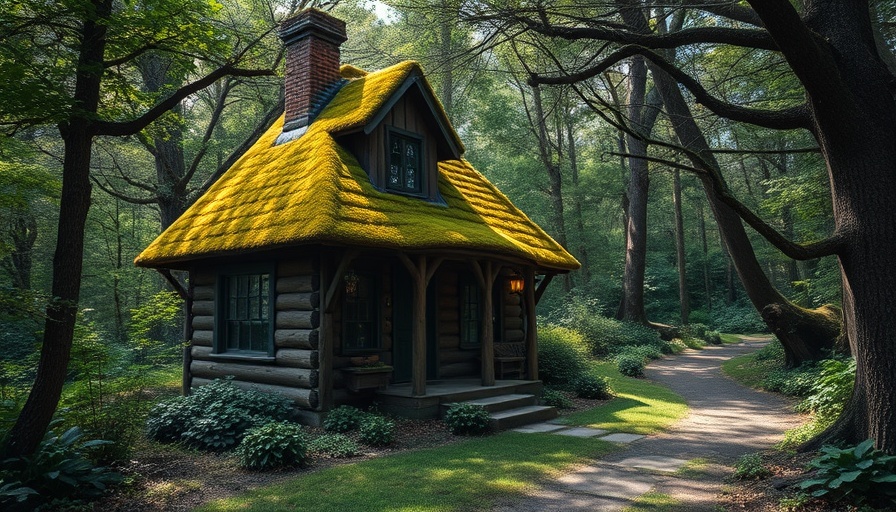
The Timeless Allure of Cottagecore: A Resurgence of Rural Aesthetics
If you’ve spent any time exploring home decor trends on social media, you may have noticed a rising fascination with the cottagecore aesthetic. This design style champions rural living, embracing the beauty of nature and the serenity of a simpler life. Transforming homes into cozy havens reminiscent of distant muzzles filled with blooming flowers and rustic charm, cottagecore is about more than just aesthetics—it’s an emotional retreat that offers a sense of nostalgia.
Cultural Roots of Cottagecore: A Nostalgic Journey
The roots of cottagecore date back to the 18th century, during which figures like Marie Antoinette popularized a rustic ideal. In her quest for authenticity, she commissioned the creation of a faux village where she and her courtiers could escape the rigidity of royal life, donning pastoral costumes to immerse themselves in agrarian activities. Fast forward to today, and this longing for connection to the land has sparked a revival in cottagecore, urging many to focus on mindful living through crafting, gardening, and other wholesome pursuits.
The Current Appeal: Why Now?
In an age of rapid digitalization and urban sprawl, many find themselves yearning for tranquility and simplicity. The pandemic has intensified this craving, leading to a flourishing interest in home-based hobbies and DIY projects. This trend has not only blossomed into modern, chic décor but also drastically influenced how we view our living spaces. People from urban cities to suburban neighborhoods are sprucing up their interiors by incorporating elements inspired by cottagecore, thus making it a desirable lifestyle choice for many.
Creating Your Own Cottagecore Space: Six Transformative Tips
Those wishing to infuse their living spaces with the charm of cottagecore can initiate simple yet impactful changes. Here are six effective tips:
1. Embrace Nature-Inspired Colors
The foundation of cottagecore is rooted in earthy tones. Soft greens, warm browns, and gentle creams create a calming atmosphere. Staying grounded in nature’s palette fosters harmony and warmth in your home.
2. Mix and Match Furnishings
The heart of cottagecore lies in its eclectic style. You don’t have to settle for a uniform look. Introduce mismatched furniture and rich textures such as wicker chairs, floral patterns, and aged wood to create a homely, lived-in vibe.
3. Incorporate Natural Elements
Natural materials like cotton, linen, and straw are staples of the cottagecore aesthetic. Invest in handmade items like crocheted throws, wooden vases, or potted herbs to further enhance the organic feel of your space.
4. Elevate Lighting with Warm Glow
Lighting plays a pivotal role in establishing a cozy ambiance. Opt for warm-toned lamps, twinkling fairy lights, or candles to create a gentle glow that invites comfort into your home.
5. Foster an Herb Garden
Incorporating an herb garden in your kitchen or balcony will not only add a splash of greenery but also invigorate your cooking. It connects you with nature’s bounty while providing fresh accents to your culinary endeavors.
6. Reflect Your Unique Personality
Lastly, infuse your space with personal touches. Frame cherished family photos, display sentimental items, or showcase your creative handiwork to make your cottagecore aesthetic truly authentic.
Why Cottagecore Is More Than Just a Trend?
This aesthetic movement transcends decorative choices—it's a means of cultivating a lifestyle that prioritizes simplicity and mindfulness in our fast-paced world. By embracing the cottagecore aesthetic, you join a community that values the beauty of everyday life, crafting intimate, personalized spaces that tell your unique story. Whether you reside in a bustling urban center or the tranquil countryside, you can incorporate these principles into your home. The beauty of cottagecore lies not only in its visual appeal but in the emotions it evokes—feelings of warmth, nostalgia, and tranquility.
Consider your next project in the home, and see how these cottagecore-inspired elements can fill your space with charm and personality. Are you ready to embrace an enchanting lifestyle? Explore potential homes for sale that reflect this aesthetic and start your journey toward a delightful living experience.
 Add Row
Add Row  Add
Add 



Write A Comment